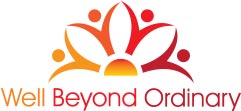In my last blog post, we explored the topic of advocacy. Today I have the honor of featuring a representative  from the next generation of cancer advocates.
from the next generation of cancer advocates.
While search for cancer cures remains a major priority, there is an evolution occurring in the cancer conversation where a stronger emphasis is finally being placed on prevention as an additional tool in the fight to reduce the impact of this disease.
Some advocates like Shaney Jo Darden, the founder of Keep A Breast Foundation, were early on in identifying the role of prevention as a key component to saving lives. At the time, it was a less popular road to travel, but that’s Shaney for you. More than a decade later, her now international organization is a leader in educating young people about prevention as well as the role of toxins and the importance of cleaning up the environment through KAB’s Non-Toxic Revolution program.
Another organization that chose to rise to the call for action in the arena of prevention is the Campaign to Control Cancer (C2CC). Today, I have the honor of turning the tables on my interview from the advocacy film, Alison Crepinsek, Health Promotion Manager and find out more about her role as a young advocate focused on prevention through education and action as well as more about the C2CC.
 Alison, please share with my readers a bit about your organization and what brought you to the World Cancer Congress 2012.
Alison, please share with my readers a bit about your organization and what brought you to the World Cancer Congress 2012.
The Campaign to Control Cancer (C2CC) is a not-for-profit organization based in Toronto, Canada. We are dedicated to cutting cancer down to size through knowledge, change and action. Launched in early 2005, the mission of the C2CC is to fundamentally transform Canada’s response to cancer to one of strength and control. My main role at C2CC is to manage a project called Engaging Emerging Leaders in Cancer Control (E2C2) – an initiative that takes us to university campuses across the province of Ontario to work with students to implement innovative campaigns about cancer control and prevention.
Managing this project led me to attend the UICC’s World Cancer Congress in August, 2012 where I had the opportunity to meet Tambre and other amazing people in the global cancer community. I attended the WCC for a couple reasons but mainly focused on filming the short film about the role of advocacy on the global cancer agenda called Voices of Advocacy.
What inspired you to want to work with C2CC in your role there?
There are definitely a few factors that impacted my decision to work with C2CC. In the past I have worked in youth engagement in a university setting and I saw the E2C2 project as an opportunity to gain more experience doing that type of work. I love working at universities – I think students are doing some truly groundbreaking work and it’s great to be able to tap into that and support a community of advocates.
At the same time though, my grandmother whom I was very close with was transitioning into the final stage of pancreatic cancer. She never stopped being herself throughout treatment and was so happy when I told her I got a new job in the cancer field. My experience with my grandmother and other friends and family members affected along the way made me realize that everyone has a story about cancer and it has truly affected all of us in some capacity. What I am finding is really inspiring about my job is the power of those stories and the ability for them to mobilize a group of people into action.
At the conference, you spent the first several days interviewing attendees for a documentary film you were creating for C2CC. Please share with us the intention of the film.
The intention of the film is to mobilize our field to advance advocacy on a global scale. We didn’t want the film to promote C2CC or any single organization but instead to catalyze the global cancer community to take advocacy seriously and give it a more prominent role on the agenda in Melbourne. We wanted to highlight the people and organizations like yours that are already doing great work around advocacy and provide them with a platform to share their successes.
Finally, I think we wanted to provide an opportunity for our student leaders to showcase their hard work. They’re already incredible advocates at their university and have the potential to create change in their community. Young people are leading the way but we need to work alongside them more effectively and develop authentic partnerships.
Check back in for the final part of this three part series where Alison shares the surprising insight she gained by making the film.

